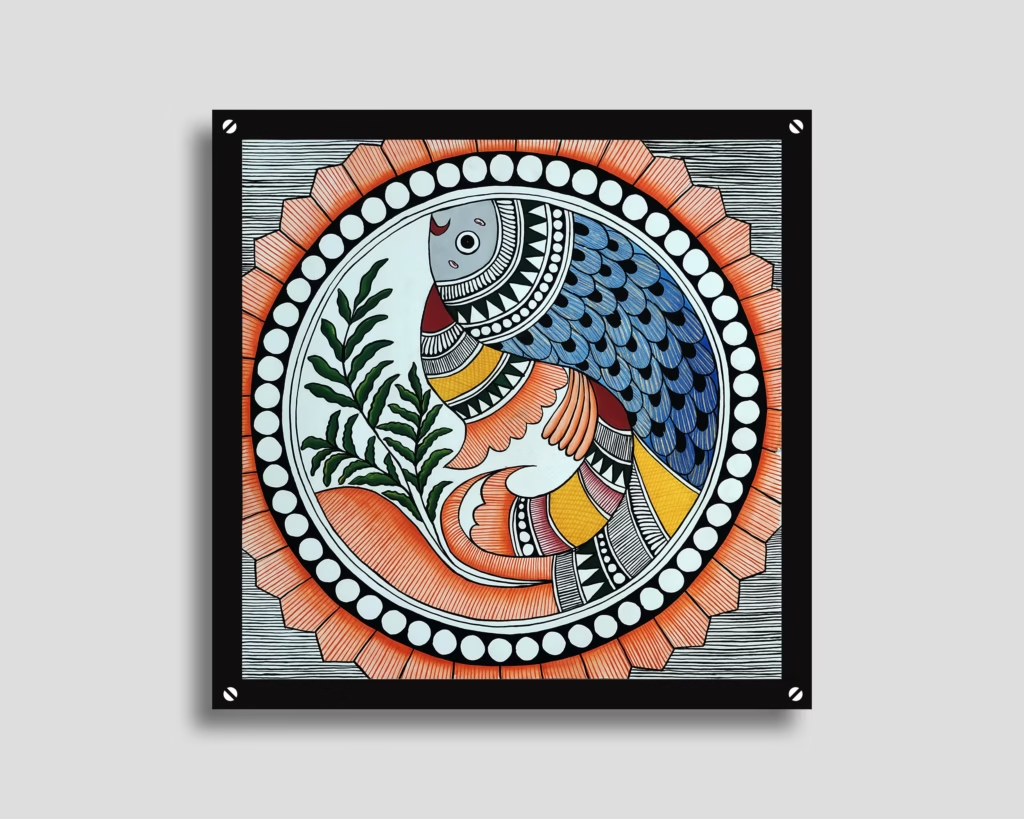
Madhubani Fish Art is a traditional folk painting style from the Mithila region of Bihar, India. Fish are a common and significant motif in Madhubani art, symbolizing fertility, prosperity, and good luck. These artworks are known for their intricate patterns, vibrant colors, and use of natural dyes and pigments. Typically drawn using twigs, brushes, or even fingers, fish in Madhubani art are often surrounded by detailed floral and geometric designs, reflecting a deep connection to nature and culture.
Madhubani painting banane ke liye kuch specific colors, brushes (ya tools), aur patterns ka use hota hai. Ye traditional art form Bihar ke Mithila region se aaya hai, aur isme natural aur symbolic elements kaafi important hote hain.
🎨 Colors (Rang)
Traditionally, natural colors use kiye jaate the, lekin ab acrylic ya poster colors bhi use kiye jaate hain. Kuch common colors:
- Laal (Red) – passion, energy
- Neela (Blue) – Lord Krishna, calmness
- Hara (Green) – nature, fertility
- Peela (Yellow) – happiness, turmeric (haldi)
- Kala (Black) – outlines, sometimes for mystery or death
- Safed (White) – purity
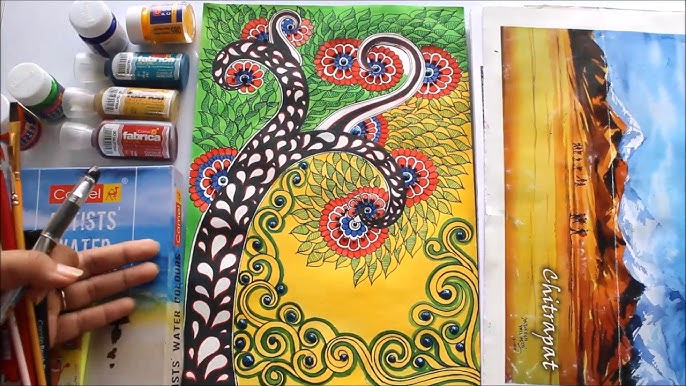
👉 Natural colors banane ke traditional sources:
- Haldi + milk = yellow
- Kusum flower = red
- Indigo = blue
- Soot ka kala = black
🖌️ Brushes / Tools
Traditionally, brushes nahi, balki ye tools use hote the:
- Bamboo sticks ka pointed end
- Matchstick or twigs
- Cotton wrapped sticks for filling colors
- Ab modern times mein fine brushes bhi use kiye jaate hain (size 0 to 2 for detailing)
🌀 Patterns & Motifs
Madhubani painting ka base geometry aur symmetry hota hai. Ye kuch common patterns hain:
- Double line borders with flowers, leaves, vines
- Repetitive patterns – fishes, peacocks, elephants
- Faces in profile
- Sun, moon, and gods/goddesses (like Krishna, Ram, Durga)
- Scenes from mythology – Ramayana, Mahabharata
- No empty space – har jagah koi na koi design hota hai
🖼️ Tips for Making a Madhubani Painting:
- Start with a pencil sketch (light hand).
- Use black for outlines – traditionally with bamboo stick.
- Fill colors carefully – within lines, avoid shading (flat fill hota hai).
- Decorate borders heavily – kaafi detailing hoti hai.
- Use symmetry – dono side ka design barabar rakho.
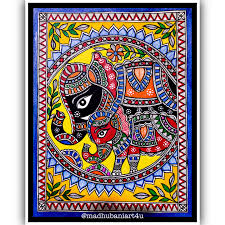
: An acrylic painting on paper depicting elephants amidst lush foliage, reflecting the harmonious relationship between nature and mythology.
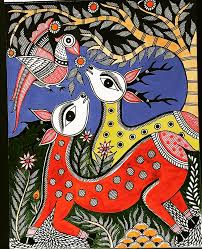
This painting not only showcase the beauty of deer but also reflect the deep cultural and spiritual connections embedded in Madhubani art.
This painting portrays two deer by a riverbank, surrounded by blooming lotuses. The use of pastel reds and black accents adds a tranquil ambiance to the artwork.
A vibrant jungle scene featuring deer, elephants, and marine life, all intricately detailed in traditional Madhubani style..
Deer With Its Baby by Rina Patwa: This piece captures the tender bond between a mother deer and its fawn, rendered in acrylic on canvas with the characteristic Madhubani patterns.
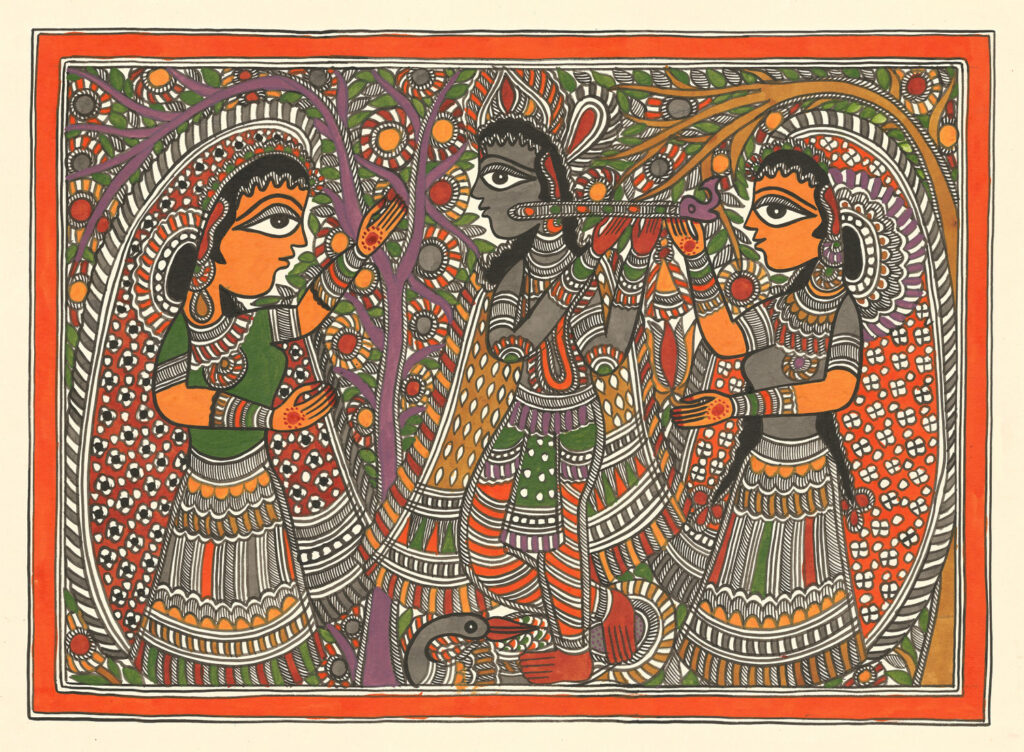
“This vibrant Madhubani painting depicts Lord Krishna standing gracefully between two women, traditionally believed to be Radha and another gopi. Rendered in intricate Mithila art style, the scene bursts with detailed floral patterns, bright natural colors, and symbolic motifs like peacocks and trees. Krishna is adorned with a peacock-feather crown and holds a flute, embodying divine charm and playfulness, while the women gaze at him in admiration, reflecting the spiritual devotion of the Gopis.”
